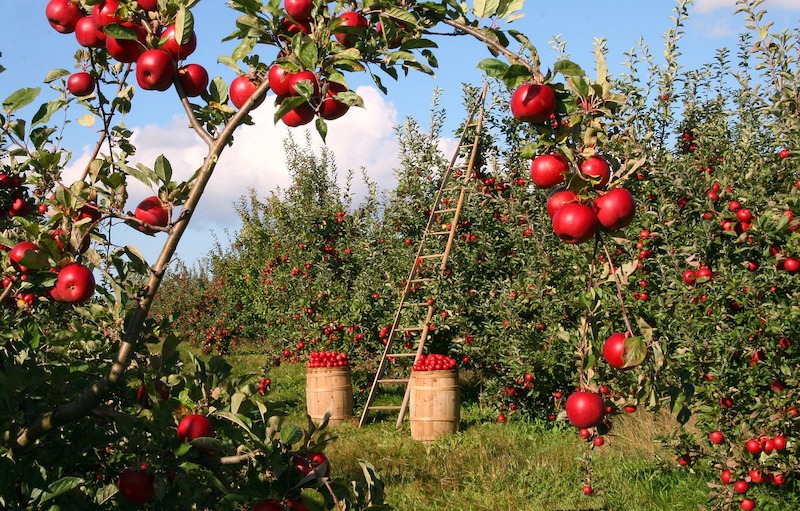Planting bountiful fruit trees can be tricky, they're rather finicky and require precise soil balance and nutrients. Check out this article to learn the lingo and find out the difference between chill hours and degree days when growing fruit trees.
Chill Hours and Degree Days
Q: What is the difference between chill hours and degree days for plants? I see them listed in some catalogs and don't know whether I need to be concerned about them when choosing plants.
A: Plants that grow in cold winter climates need to stay dormant for the whole winter and not wake up — so to speak — too soon in the spring. Perennials, biennial vegetables, bulbs and fruit trees are the plants we are most concerned about when we think of chill hours.
As fall temperatures cool below 60 degrees F, these plants go dormant. Plants seem to remain dormant at temperatures below 32 degrees F, so they don't count in our calculations of the total number of chill hours needed. There are several methods of calculating chill hours, but a common method is to just add up all of the hours each day where the temperature is between 32 and 45 degrees F.
In catalogs, you will often find chill-hour requirements listed for many kinds of fruit trees. Typically, apple trees need lots of cold and peaches need very little cold. But within this generalization, some apples need only a few hundred chill hours all winter and can be grow in Southern California, and some peaches can handle many chill hours and be grown in Northern Illinois.
If a fruit tree needs lots of chill hours before it can break dormancy in the spring and it doesn't receive them, it will have a problem trying to grow in the spring. Some of the leaf and flower buds may not grow at all, and those branches may die. Or, blooming may be delayed so long that the fruit can't mature during the shortened growing season.
If a tree accumulates the entirety of its chill hours too soon, it could start blooming during a temporary warm spell late in the winter and then suffer late winter freeze damage.
Horticultural degree days are a calculation of the temperature change as the weather warms up in spring and summer. Imagine a cold-blooded insect that is dormant for the winter because the weather is cold. The insect could be in any life cycle stage: egg, larva, pupa or adult. As the weather warms up, the temperature needs to reach a specific range for the insect to begin growth. It could be 33 degrees — just above freezing — 42.8 degrees or 50 degrees. When above that temperature, the insect's cells grow a bit. And when below that temperature, they don't. The warmer it is, the faster the growth.
There are a variety of formulas for calculating the degree days to add together. A base number is chosen (usually 30 or 50 degrees), and when the temperature rises above the base, the number of degrees over the base is added up. Nothing is added to the number until the temperature again rises above the base number.
Every cold-blooded organism that goes dormant due to cold temperatures — fish, amphibians, insects, plants, fungi, bacteria, etc. — will have to warm to a certain temperature to begin growth. As the degree day total increases, we can predict when an insect will have grown enough to become a pest.
Don Orton's book “Coincide” shows that some plants bloom when an insect becomes a pest on a different plant. There is no real relationship between the organisms, but they bloom or become a pest at the same number of degree days.
Save or share this infographic for reference: Chill Hours and Degree Days

Email questions to Jeff Rugg at [email protected]. To find out more about Jeff Rugg and read features by other Creators Syndicate writers and cartoonists, visit the Creators Syndicate website at www.creators.com.
COPYRIGHT 2017 JEFF RUGG
DISTRIBUTED BY CREATORS.COM



